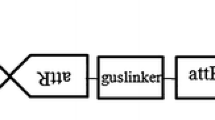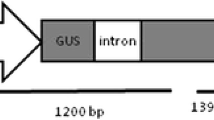Abstract
An efficient system for Agrobacterium-mediated transformation of Eucalyptus camaldulensis and production of transgenic plants was developed. Transformation was accomplished by cocultivation of hypocotyl segments with Agrobacterium tumefaciens containing a binary Ti-plasmid vector harboring chimeric neomycin phosphotransferase and β-glucuronidase (GUS) genes. A modified Gamborg's B5 medium used in this study was effective for both callus induction and regeneration of transgenic shoots. This medium could also effectively maintain the organogenic capability of callus for more than a year. Culturing transgenic shoots in Murashige and Skoog medium supplemented with 0.1 mg ⋅ l–1 benzylaminopurine prior to root induction in rooting medium markedly increased the rootability of shoots that were recalcitrant to rooting. Histochemical assay revealed the expression of the GUS gene in leaf, stem, and root tissues of transgenic plants. Insertion of the GUS gene in the nuclear genome of transgenic plants was verified by genomic Southern hybridization analysis, further confirming the integration and expression of T-DNA in these plants.
Similar content being viewed by others
Author information
Authors and Affiliations
Additional information
Received: 1 August 1997 / Revision received: 11 December 1997 / Accepted: 24 January 1998
Rights and permissions
About this article
Cite this article
Ho, CK., Chang, SH., Tsay, JY. et al. Agrobacterium tumefaciens-mediated transformation of Eucalyptus camaldulensis and production of transgenic plants. Plant Cell Reports 17, 675–680 (1998). https://doi.org/10.1007/s002990050464
Issue Date:
DOI: https://doi.org/10.1007/s002990050464




